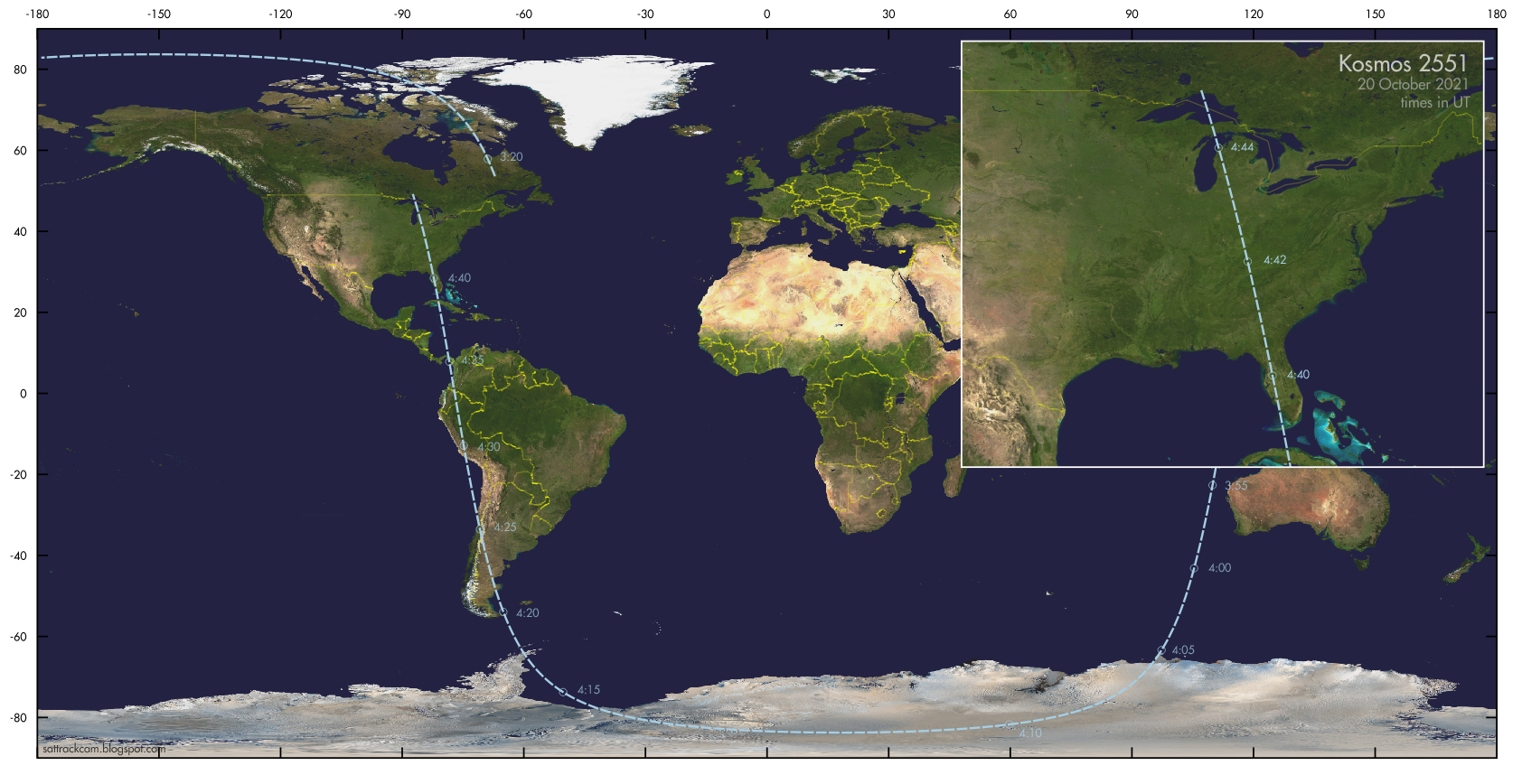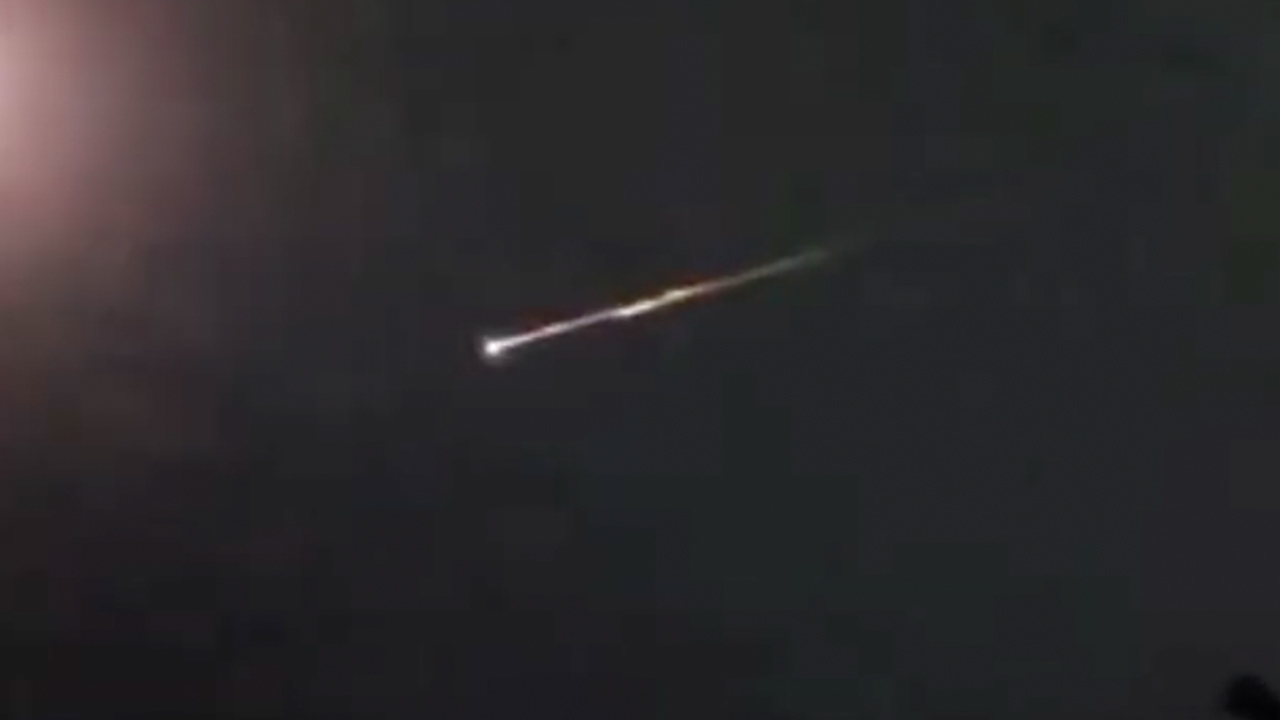A failed Russian spy satellite crashed back to Earth early Wednesday morning (Oct. 20), burning up in a brilliant fireball spotted by many observers in the American Midwest.
The American Meteor Society (AMS) has so far received more than 80 reports about the fiery display, from people as far south as Tennessee and as far north as Michigan. The AMS has posted dramatic imagery captured by some of these observers, including a 27-second video from skywatcher Chris Johnson that shows the meteor blazing a trail through the skies above Fort Gratiot Township, Michigan.
The fireball lit up around 12:43 a.m. EDT (0443) Wednesday, according to the AMS, leaving little doubt about its cause.
Related: 5 amazing fireballs caught on video
12:43 a.m. EDT is "the exact predicted time Kosmos-2551 passed over the region, and within the re-entry time uncertainty window given by Space Force. So I conclude that the ID with Kosmos-2551 is solid," astronomer and satellite tracker Jonathan McDowell, who's based at the Harvard-Smithsonian Center for Astrophysics, said via Twitter Wednesday.
Kosmos-2551 is a Russian reconnaissance satellite that launched on Sept. 9 but apparently failed shortly thereafter. The spacecraft had not adjusted its orbit once since liftoff, McDowell tweeted on Monday (Oct. 18), noting that Kosmos-2551 was expected to re-enter Earth's atmosphere the next day — a forecast that turned out to be off by less than an hour.
Kosmos-2551's incineration likely did not threaten anyone on the ground. The satellite "is thought to be only about 500 kg [1,100 pounds] and no debris is expected to reach the ground," McDowell said in another Monday tweet.
Get the world’s most fascinating discoveries delivered straight to your inbox.
Space debris re-entry spotter over #Michigan last nighthttps://t.co/DB8JBE8vW0video: Chris Johnson pic.twitter.com/SHDlLdoi3UOctober 20, 2021

Space junk fireballs, while often spectacular, aren't particularly rare. Last year, for example, the re-entering third stage of a Soyuz rocket caused a brilliant sky show over parts of Australia during the launch of a Russian military satellite.
Such incidents are becoming more common as humanity launches more and more satellites to orbit. This satellite boom concerns many experts, who stress that action is needed to make sure the space-junk issue doesn't get out of hand.
Mike Wall is the author of "Out There" (Grand Central Publishing, 2018; illustrated by Karl Tate), a book about the search for alien life. Follow him on Twitter @michaeldwall. Follow us on Twitter @Spacedotcom or Facebook.





